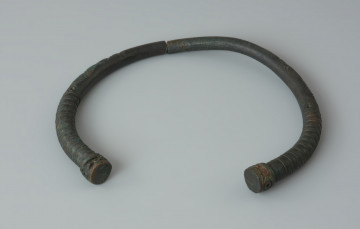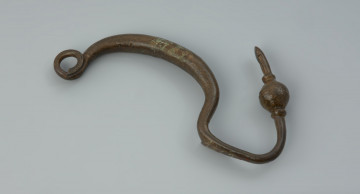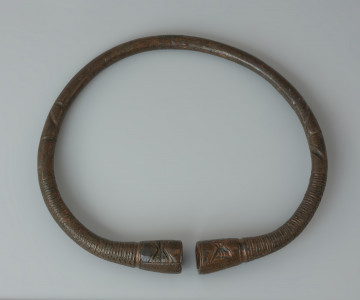
Copy of type I crown necklace (Kostrzewski)
National Museum in Szczecin
Part of the collection: Antiquity
The neck-ring made of bronze, with stamped ends, which show impressions originally filled with red enamel, should be dated to the earlier pre-Roman period, i.e., 3rd - 2nd centuries BC, and be associated with the settlement of the Germanic people of the Jastorf culture. This culture originated in northern Germany and southern Scandinavia. In the mentioned period the people from this culture had expanded to the south-east, among others to the Greater Poland region. In Western Pomerania, the Jastorf communities developed their local variant of this culture, called the Oder group. The presence of a neck-ring with stamped ends in the West Pomeranian artefacts of the Oder group is one of the examples of the phenomenon of the so-called “latenization” - the adoption by the Germanic people of certain cultural patterns, including forms of decoration, from the population remaining at the same time under the influence of the La Tène culture, developed by the Celts. The neck-ring from Ognica was discovered by accident in 1914 during agricultural work, along with fragments of two other bronze neck-rings, two belt hooks, a brooch, two iron fibulae, and fragments of handmade pottery. All these objects probably come from a cremation cemetery with richly equipped burials.
Bartłomiej Rogalski
Author / creator
Dimensions
cały obiekt: width: 0.7 cm, diameter: 14.5 cm
Object type
jewellery; necklace
Technique
casting
Material
bronze
Creation / finding place
Owner
Muzeum Narodowe w Szczecinie
Identification number
Location / status

National Museum in Szczecin

BC 200 — 1
National Museum in Szczecin

National Museum in Szczecin
DISCOVER this TOPIC
Castle Museum in Łańcut
DISCOVER this PATH
Educational path